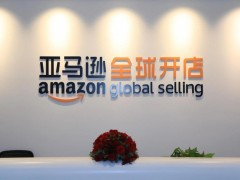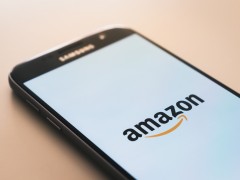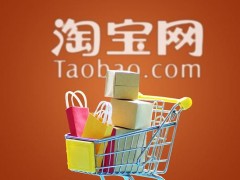A detailed explanation of Alibaba's sales model?
阿里巴巴的营运模式是遵循一个循序渐进的过程。首先抓住基础的,然后在实施过程中不断捕捉新出现的收入机会。从最基础的替企业架设站点,到随之而来的网站推广,以及对在线贸易资信的辅助服务,交易本身的订单管理,不断延伸。
出色赢利模式符合:赢利的强有力,可持续,可拓展。 架设企业站点 或者认为架设企业站点,没有稀奇的地方。但是重要的不是做什么,而是如何去做。
阿里巴巴的成功经验简单的如下:阿里巴巴的成功,在经营方面有三点,其一是“中国供应商”,其二是“诚信通”,其三是“支付宝”(尽管它是独立于阿里巴巴而存在的),其四是“网络广告”,当然,前三个是关键,后者只是其品牌影响力积累和流量增大之后的自然结果。
阿里巴巴模式:网上交易,网下配送,阿里巴巴被誉为全球最大的网上贸易市场。因此,可以把阿里巴巴作为电子商务的代表。
商务活动包括四流,即信息流、商流、资金流、物流。
所谓信息流,即传递商品的信息。传统商业是通过实物传递商品的信息。所谓商场,首先是一个媒体,是传递商品信息的媒体。商场将各种各样的商品摆放在那里,顾客到商场采购,首先是通过看一看,摸一摸,接收商品信息。
然而,这是一个极为昂贵的信息媒体,它需要昂贵的店面,需要将大量贵重的商品长期摆放在那里,不仅要占用大量资金,每年还会有巨额折旧,许多商品摆放几年后,就成了废品。
而电子商务,是用电子信息代替实物信息。比如,人们要看一本书,不一定放一本真实的书在那里,而是放一本书的相关图片,再加上各种解释就够了。用电子信息代替实物信息,自然会节省巨额的信息传递成本。这是电子商务优于传统商业的一个重要原因。
Professional answer
Alibaba's operating model follows a step-by-step process. First, grasp the basics, and then constantly capture new revenue opportunities during the implementation process. From the most basic setting up sites for enterprises, to the subsequent website promotion, as well as auxiliary services for online trade credit, and order management of the transaction itself, it continues to extend.
The excellent profit model meets the following requirements: strong, sustainable, and expandable profits. Setting up corporate sites or thinking that setting up corporate sites is not unusual. But what is important is not what to do, but how to do it.
Alibaba's success experience is simply as follows: Alibaba's success has three points in terms of business operations. The first is "China Suppliers", the second is "Integrity Pass", the third is "Alipay" (although it exists independently of Alibaba), and the fourth is "Online Advertising". Of course, the first three are the key, and the latter is just the natural result of its brand influence accumulation and traffic growth.
Alibaba model: online transactions, offline distribution, Alibaba is known as the world's largest online trade market. Therefore, Alibaba can be regarded as the representative of e-commerce.
Business activities include four flows, namely information flow, business flow, capital flow, and logistics.
The so-called information flow refers to the information of commodities. Traditional commerce transmits the information of commodities through physical objects. The so-called shopping mall is first of all a medium, a medium for transmitting commodity information. The mall puts all kinds of commodities there, and customers go to the mall to purchase, and first receive commodity information by looking at and touching them.
However, this is an extremely expensive information medium. It requires expensive stores and requires a large number of expensive commodities to be placed there for a long time. Not only does it take up a lot of funds, but there will also be huge depreciation every year. Many commodities become waste after being placed for a few years.
E-commerce replaces physical information with electronic information. For example, if people want to read a book, they don’t necessarily have to put a real book there, but put relevant pictures of a book and add various explanations. Using electronic information instead of physical information will naturally save huge information transmission costs. This is an important reason why e-commerce is superior to traditional commerce.
Similar Q&A
recommend What is the name of Alibaba's artificial intelligence?
E-c News Continuously pushing e-commerce knowledge to you








Latest Q&A More
-
Do I need a trademark to open a franchise store on Pinduoduo to sell books?
#Pinduoduo#
-
How to withdraw from a Pinduoduo store
#Pinduoduo#
-
How to withdraw from Pinduoduo merchants
#Pinduoduo#
-
How to pay fees when closing a Pinduoduo store
#Pinduoduo#
-
How to withdraw from Pinduoduo
#Pinduoduo#
-
Which store on Pinduoduo is authentic?
#Pinduoduo#
-
Which stores on Pinduoduo can buy genuine products?
#Pinduoduo#
-
How to check the store under Pinduoduo
#Pinduoduo#
-
How to receive Pinduoduo online game products
#Pinduoduo#
-
How to sell the electronic version on Pinduoduo
#Pinduoduo#
E-c News 2025-12-26 09:21:13

- African netizens use China Africa cross-border e-commerce platform for online shopping
- how is the new seller of cross-border e-commerce doing?
- how can cross-border e-commerce Amazon sell on Amazon platform without goods?
- Amazon store opening process and cost analysis!
- Amazon plans to expand its pharmacy business on a large scale and will add same day delivery service
